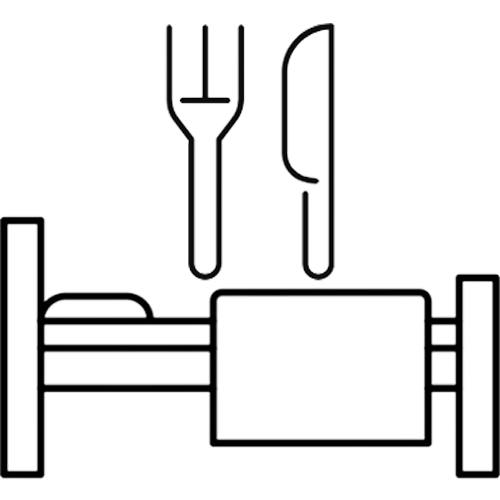The small town of Gardams is located on the Švėkšna-Zemaičiai Naumiescis road. It is an old town whose name derives from the word “gardas” and meant a fenced area or even a castle or fortress. Historical sources mention it in 1561, when its land was surveyed in valaki. In 1562, it was mentioned as a centre of feudalism, from which the royal manor’s land was administered – from Laukstėnai to Juodžiai and Vanagiai villages. Since the 18th century, Gardamas has been called a town. The town is famous not only for its beautiful surroundings and the picturesque slopes of the Tenenis, but also for the “Mažvydas Road” and Lourdes.
The first church in Gardam is believed to have been built in the 17th century, but a fire destroyed it. A new wooden church was built on the same site in 1706. After the wars with the Germans, Gardam slowly grew until trade routes opened up through the Samogitian land. As Samogitian Naumiesč began to grow, Gardam’s role as a settlement began to decline. After 1795, when Tsarist Russia occupied Lithuania, the situation of the Gardam residents, known as state peasants, worsened: recruiting duties, higher taxes. During the reign of the Tsar, Gardamas and the surrounding villages became a border of the Russian Empire. During the years of the press ban, the border was heavily guarded, with border guards’ barracks located on the Naumiestis-Gardamas-Svėkšna road, and the road itself was considered a second border line. At the end of the 19th century, Gardamas was one of the centres of book smuggling, where the banned Lithuanian press was distributed.
The present St. Roko Church was built in 1932. The miraculous Lourdes was built on a hillside at the beginning of the 20th century. The niche is made of fieldstones and is about 1.8 m high. The story of Lourdes’ origins is told in different ways. Some say that Mary appeared there, others that a man who did not believe in God had his child healed. In gratitude, the man built Lourdes. In front of Lourdes is a well that never freezes and never runs dry. On the right side of Lourdes there are stone steps leading to the church. There are 14 of them, as many as there are stops on the Way of the Passion of Christ. The old people say that whoever climbs those steps passes the stations (stacijas).
Lourdes is a place where flowers are always blooming and candles are burning. It is a place where people quietly express their grief and joy, a place whose water gives hope and refreshment.
Gardamas
Paskutinį kartą redaguota: 2024-06-02





































